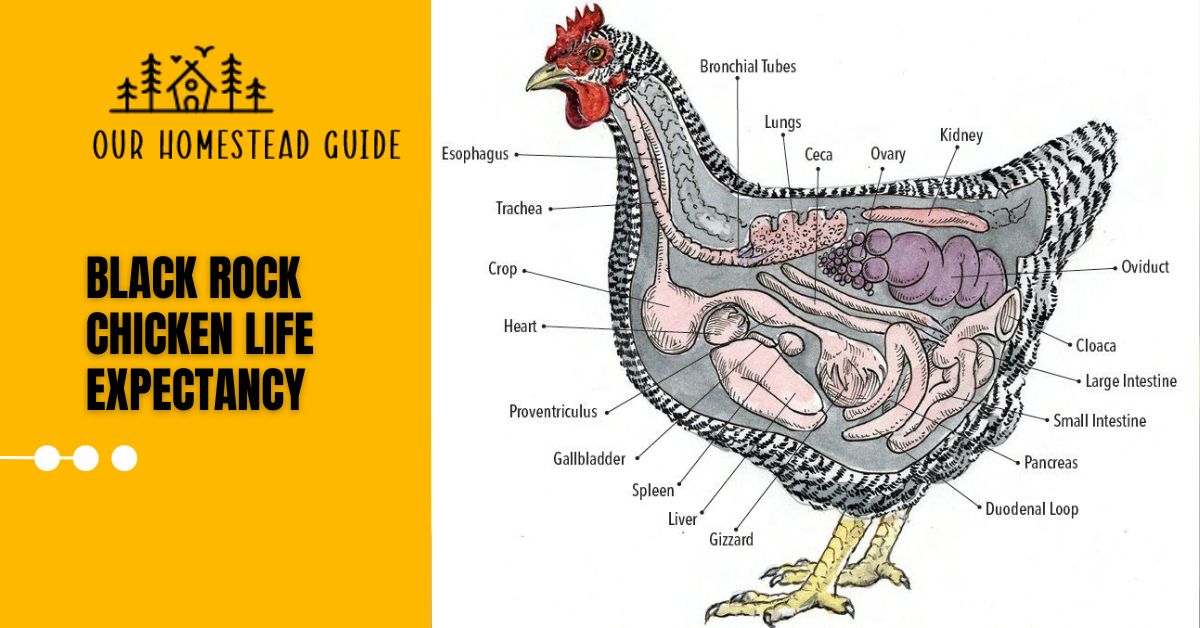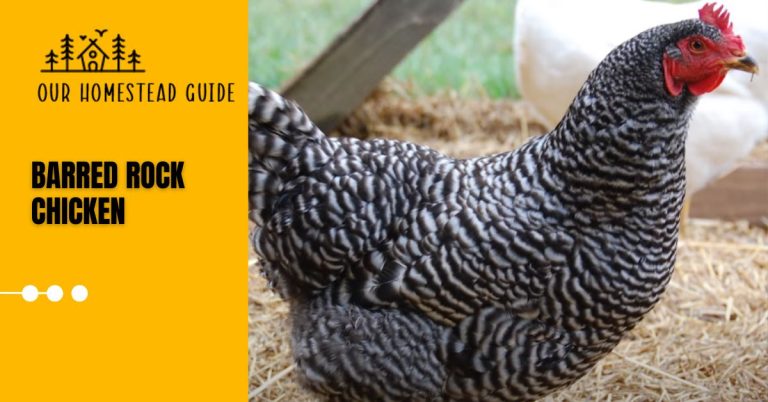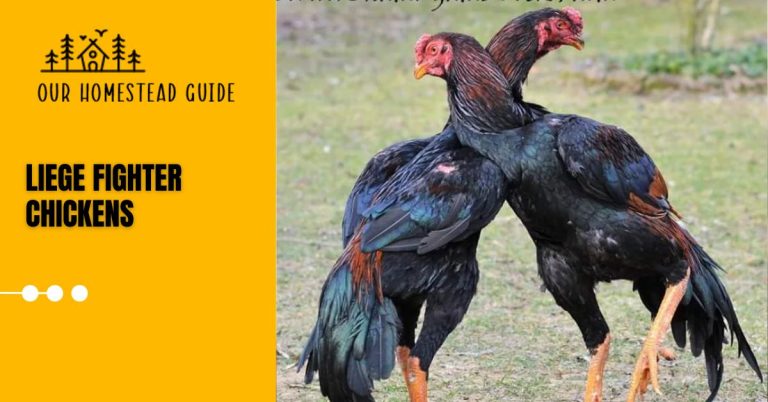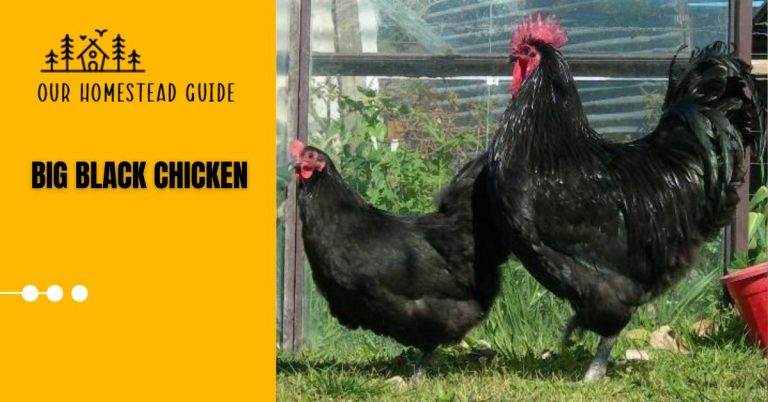Black Rock Chicken Life Expectancy: A Comprehensive Guide
Black Rock Chicken Life Expectancy; Preferred for their rich black plumage and remarkable egg production, Black Rock hens have a longer lifespan than most common varieties. These feathery companions may happily outlive the typical lifetime of hens by strutting their thing for a joyful 7 to 8 years with the right care.

So be ready for years of joy and clucking with these endearing black beauties in your coop! ❀️
Black Rock Chicken Life Expectancy
Among chickens, the Black Rock chicken distinguished out for its sleek black plumage and remarkable egg-laying skills. However, Black Rocks are renowned for having an exceptionally long lifespan in addition to their beauty and production.
How Long Do Black Rocks Live?

The normal longevity of many other chicken breeds is 3 to 5 years; however, with good care, Black Rock chickens can live up to 7 or 8 years. There are several reasons for this extraordinary longevity:
Vigor of a Hybrid:
Rhode Island Red and Barred Plymouth Rock hens were crossed to create the hybrid breed known as Black Rocks. The progeny of this combination will be more resilient and have better general health since it contains the greatest genetic qualities of both parent breeds.
Robust Structure:
Black Rocks are resilient avians! They can survive in both hot and cold temperatures since they are highly adaptable to a variety of conditions. Their thick, dark feathers shield them from the weather and offer superior insulation.
Robust Immune System:

Black Rocks’ innate resistance to several prevalent poultry illnesses adds to their lifespan.
Maximizing Your Black Rock’s Lifespan
Even though heredity plays a big part, taking good care of your Black Rock will extend its life. The following are important points to remember:
High-quality nutrition:
Retaining health and avoiding disease require a well-balanced diet high in protein, vitamins, and minerals. Provide a range of foods for your Black Rocks, including as grains, fruits, veggies, and pellets.
Large and Tidy Coop:
Make sure your coop has adequate room for your hens to walk about in comfort. Try to give each bird at least 3 square feet. To stop the spread of parasites and germs, keep the coop clean and well-ventilated.
Frequent Veterinary checks:
Make an appointment for your hens’ routine checks with your veterinarian to keep an eye on their health and catch any possible issues early. The likelihood of a long and healthy life for your Black Rock can be greatly increased with early intervention.
Living the Good Life with Black Rocks
You may foster an atmosphere where your Black Rock hens can flourish by paying attention to their needs and by heeding our advice. These gregarious, long-lived birds will bring you years of amusement (they can be rather amusing and inquisitive!) and, of course, tasty, nourishing eggs.
Therefore, the Black Rock chicken breed is unquestionably something to think about if you’re searching for a chicken breed that combines beauty, production, and lifespan. You can give these incredible birds a happy and healthy home and enjoy their companionship for many years to come with just a little work on your part.
Black Rock Chicken Egg Production
In terms of egg production, Black Rock chickens are a backyard flock’s dream come true. These feathery companions are well-known for their remarkable production and reliable laying patterns.
Approximately 280 big, rich brown eggs with flawless shells are produced in their best year. Black Rocks continue to be dependable producers even after their first year, producing 200–250 eggs a year. That will be a tasty breakfast buffet for months to come!
Why are Black Rocks the greatest when it comes to eggs? Their success is attributed to a number of factors:
Hybrid vigor: They receive the greatest genes for producing eggs from both parent breeds because they are a hybrid between Barred Plymouth Rocks and Rhode Island Reds.
dependable cycle of laying: A continuous supply of eggs is to be expected since Black Rocks lay around four to five eggs every week when they are at their best.
Non-broodiness: Black Rocks don’t take long pauses to sit on their eggs, in contrast to certain hens that do so, which guarantees steady output.
Naturally, taking good care of your Black Rocks is essential to their happiness and productivity. If you provide them a healthy food, a large, well-kept coop, and a stress-free atmosphere, they will give you wonderful, wholesome eggs for many years to come.
Black Rock Hen Egg Colour
Egg-laying superheroes, Black Rock chickens produce gorgeous, rich brown eggs that taste like molten chocolate. These stunning women have a consistent hue with sporadic lighter freckles, making them a visual feast.
The pigments protoporphyrin IX and enocyanin, which give each egg an alluring warmth, are the key to its rich color. Black Rock chickens provide both plenty and beauty from their feathery factories, so you may indulge in colorful breakfasts or bake up a storm. Therefore, welcome these enticing chocolate orbs into your home and throw out the store-bought boxes!
Different Awesome Types of Black Chicken Breeds
Here are Different popular black chicken breeds:
| Breed Name | Origin | Appearance | Egg Color | Special Characteristics |
|---|---|---|---|---|
| Ayam Cemani | Indonesia | Completely black, including feathers, skin, and organs | Cream to light brown | Considered a rare breed; highly prized for its mystical appearance |
| Australorp | Australia | Black plumage, greenish-black sheen | Brown | Excellent egg layers, holds world records for egg production |
| Black Jersey Giant | United States | Large, majestic birds with black feathers | Brown | One of the largest chicken breeds |
| Marans | France | Dark brown or almost chocolate-colored feathers | Dark brown | Known for their dark, rich eggs |
| Sumatra | Indonesia | Slender, game-like appearance with glossy black plumage | White | Known for their elegance and beauty |
| Swedish Black Hen | Sweden | Solid black with a red comb and wattles | Brown | Dual-purpose breed, good for both meat and eggs |
| Black Australorp | Australia | Similar to the Australorp but with a focus on the black color | Brown | Excellent egg layers, friendly temperament |
Ayam Cemani

- Purpose: Dual-purpose (meat and eggs)
- Average Weight: 4-6 lbs
- Egg Production: 80 per year
It follows that it is inherently thought to be a lucky charm. In Indonesia, Sumatra, Java, and Madura Island are where it is typically raised. This bird is used in many civilizations’ pre-event ceremonies.
This chicken has black skin, feathers, and internal organs, among other things. Even Ayam Cemani’s blood has a deeper crimson color than usual. Fibromelanosis is a hereditary disorder that affects every part of the bird, which is the reason for its dark hue. This bird, which was just brought to Europe in 1998, is becoming more and more well-known in the US because of its unusual look.
Do your homework before you buy since, regrettably, many breeders are purposefully trying to pass off hybrid chickens as purebred Ayam Cemani as the bird becomes more and more popular. For this reason, it might be costly to buy this kind of chicken. Up to $5,000 can be spent on a mating couple.
The Ayam Cemani is a middling breed that can be raised for either meat or eggs. The eggs are typical in size and have a cream hue. This bird lays around twenty-five eggs at a time, pauses for a while, and then resumes its unusual (although slightly irregular) laying routine. Because of this, Ayam Cemani chickens only produce around 80 eggs annually.
Orpington
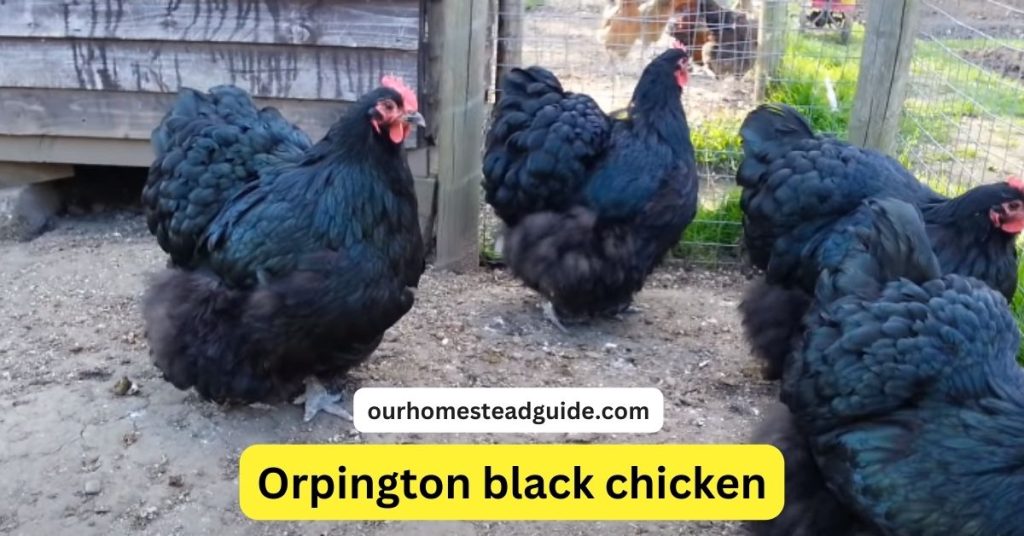
- Objective: Twofold
- Weight on average: 10 lbs.
- Production of Eggs: 150–300 yearly
One of the most popular breeds of chicken for backyard flocks is the Orpington. This type of bird, which is mostly black and has thick, fluffy feathers that enable it to quickly adapt to cold temperatures, originated in England in the eighteenth century.
Although they were originally white, Orpingtons are now also available in buff and black hues. They make excellent pets since they are calm, kind, and resilient. They are intriguing since they are among the hen kinds that are most devoted to their communities. In addition to finding food for their hens, the roosters will gather everyone at night to ensure that everyone has entered the coop.
This bird stands out in the barnyard thanks to its stunning black plumage, even if its skin is white and it does not have an all-black body. Although it may be produced for meat as well as eggs, eggs are the usual reason for raising it.
Every year, Orpingtons lay between 150 and 300 big brown eggs, many of which have a pink hue. Additionally, compared to other kinds of chickens, you may feed these less because they are superb foragers and will locate enough food on their own.
Australorp
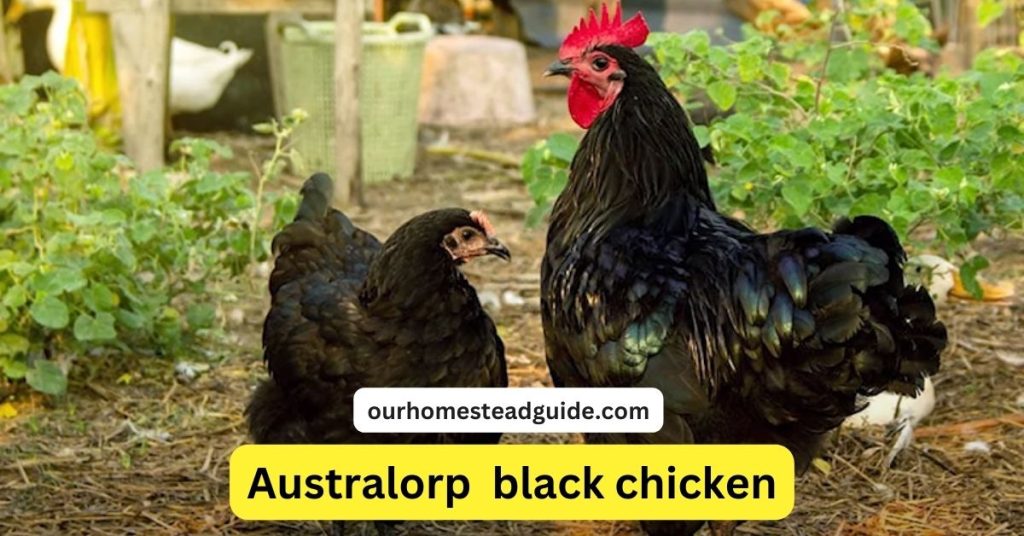
- Purpose: Dual-purpose
- Average Weight: 5-7 lbs
- Egg Production: 250 per year
Although Australians are available in a variety of hues, black is one of the most common. These stunning birds, which are an Australian hybrid of the Orpington breed, are rather easy to locate. Although they are quite kind and obedient, black Australorps may sometimes be very timid. There are Black Australians with green-tinged feathers as well.
The Black Australorp is a great choice if you want to keep black chickens as pets. These hens are not only quite beautiful to look at, but they also have a very devoted nature. A Black Australorp may be trained to eat right out of your hand.
Australorps are also excellent layers, laying a significant number of big brown eggs every week. The record for the most eggs laid in a year is held by an Australorp! They may also be reared to produce premium broilers for the meat market.
Silkies
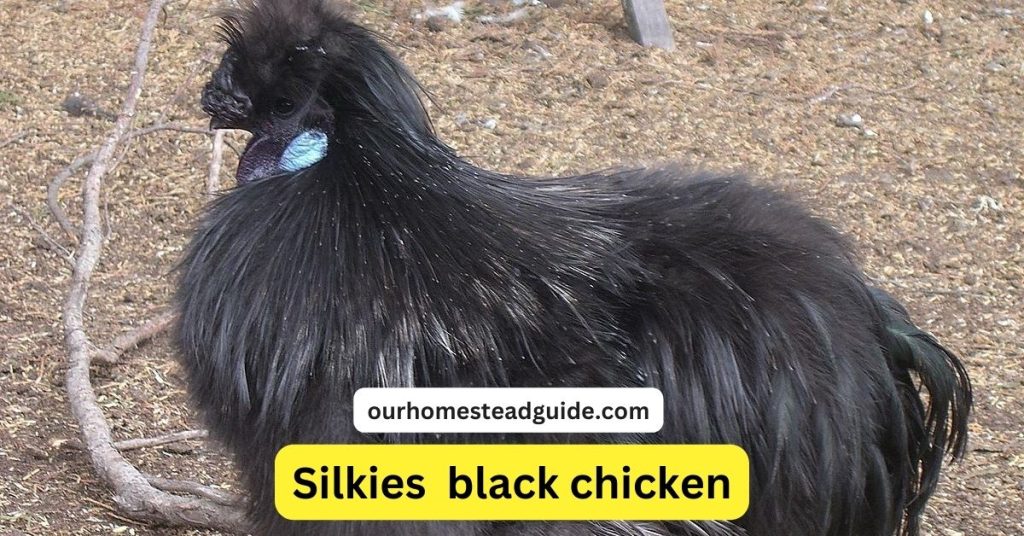
- Purpose: Ornamental
- Average Weight: 4 lbs
- Egg Production: 100 per year
Adorable silkies are among the most popular show and decorative hens. Although regular-sized Silkies can be bought in other countries, only the bantam form of this breed is sold in the United States.
The feathers of silkies are fluffy and black. Because of their unusual feather pattern, their feathers stand out rather than resting flat on their bodies. Although Silkies come in a variety of hues, black is one of the most widely used. Their skin and bones are similarly black.
Rather than having four toes, they have five, and even the color of their meat is a deeper gray-blue. Many areas consider Silkie meat to be a delicacy and think it to have curative properties.
Due to their petite size and fluffy coat, silkies are a popular choice for pets among poultry owners. A few proprietors even claim to have brought them inside the home! Even though silkies are just average layers, they make wonderful moms because of their serene, amiable personalities.
They have been developed specifically for this characteristic;, because Silkies have such a propensity to become broody, they are frequently used to “foster” eggs.
Remember that you must make sure your Silkie chicken has excellent living circumstances if you choose to raise one. These chickens are fully feathered, down to the feathers covering their feet, therefore getting their feet wet can easily create difficulties. They are great companions and rather talkative.
Minorca

- Purpose: Ornamental/egg production
- Average Weight: 7-9 lbs
- Egg Production: 120-200 per year
Spanish-bred Minorca hens are usually grown as show or decorative breeds. These stunning birds sometimes referred to as Red-Faced Black Chicken, have light red cheeks. What’s interesting is that each hen makes a special presentation of her comb falling forward. Since they are warm-weather birds, you shouldn’t raise them if you live in a frigid climate.
Although there are numerous varieties of Minorca chickens, the Black Minorca is the most well-liked. The biggest of the Mediterranean type, this chicken has a red face and glossy black feathers. It is also quite amiable.
The roosters of minors may weigh up to seven pounds, making them huge birds. Sadly, they aren’t very good for eating despite their size, yielding flesh that isn’t flavorful or has the right texture. About 120 big white eggs should be laid each year, and as this bird seldom becomes broody, there won’t typically be drops in egg production at specific seasons of the year.
These hens begin to lay at about 26 weeks of age, and while 120 eggs is the breed average, certain strains can lay as many as 230 eggs annually. If you want a decorative bird that also happens to be a competent layer, these sleek, active chickens are a great.
Black Rock Chicken Weight
The hybrid breed of chicken known as Black Rock is prized for both its great egg-laying ability and amiable disposition. However, a Black Rock chicken’s precise weight can change based on a number of variables, including age, sex, and genetic makeup. Generally speaking:
Chickens:
Typically, adult Black Rock chickens weigh 2.5 to 3 kilos (5.5 to 6.5 pounds).
Roosters:
Typically bigger, adult Black Rock roosters can weigh anywhere from 7 to 8 pounds (3.2 to 3.6 kg).
Remember that these are typical weights and that certain birds may weigh less or more than these amounts. In addition, a Black Rock chicken’s final size can be affected by appropriate diet, housing, and general care. You should speak with a veterinarian or a poultry specialist if you have specific worries regarding the weight of your hens.
Black Rock Chicken Meat
More than their meat, Black Rock chickens are prized for their ability to produce eggs. These layers are hybrids, produced by mating hens of the Rhode Island Red or Barred Plymouth Rock breed with roosters of the same breed. Because of this, their natural tendency is to produce more eggs than to grow quickly in order to produce meat.
Although Black Rock chickens are developed for meat production, it’s important to remember that you may still eat their flesh. Other varieties, such as Cornish Cross or other meat-specific breeds, are often favored for their quick growth and high meat production if you’re seeking for hens with an emphasis on meat quality.
The quality of the flesh from Black Rock chickens may not be as good as that of breeds that are particularly developed for producing meat if you are thinking about utilizing them for meat. Furthermore, the softness and taste of the flesh can also be affected by the age at which the chicken is processed.
For guidance on the best methods for preparing and consuming Black Rock chicken flesh, speak with local farmers or poultry specialists.
World’s Oldest Chicken
Matilda was the oldest chicken to have ever lived. She survived to be sixteen years old! She was formally crowned the World’s Oldest Chicken at this age. It’s interesting to note that she was the first chicken to have the distinction before. Matilda lived an interesting life.
She worked as magician Keith Barton’s animal helper. Over her life, she had the opportunity to participate in several magic shows. Matilda was a well-known figure also. She became a television celebrity after making an appearance on The Tonight Show in 2004.
In 2006, Matilda was also admitted as an honorary member of the Alabama Animal Hall of Fame.
Given that a chicken’s life expectancy was about five to 10 years, how could Matilda survive for 16 years? Veterinarians speculated that it was because Matilda had never produced any eggs. Her longevity was likely increased by this, since her body was spared the stress of having many eggs.
Tips To Help Your Chicken Live Longer
Chicken Longevity Boosters:
- Feed wisely: Provide them with food rich in protein, vitamins, and minerals that is balanced. Consider grains, fruits, vegetables, and pellets.
- Large sanctuary: Allow plenty of space for your feathered companions to wander and settle down. The ideal space for each bird is three square feet.
- Clean the coop queen: Maintain their living space immaculate. Bacteria and parasites are avoided with routine cleaning.
- Veterinary checkups are important: Plan examinations to catch health problems early. The secret is to intervene early!
- Stress-free zone: Reduce commotion and loudness. Give your hens some space to relax. Protect your coop from predators by strengthening it against intruders. First and foremost, safety!
- Freshwater flow: Make sure they always have cool, fresh water available to them. It’s important to stay hydrated.
- It’s treat time! Give them lots of toys and activities that will keep their minds active. Contented hens have longer lifespans!
Black Rock Rooster
A stunning sight in any backyard flock is the Black Rock rooster! These charming men have their own special qualities and appeal, even if they are mostly appreciated for their part in producing the next generation of egg-laying celebrities.
Picture a bird that looks like a stylish black knight. The lustrous, deep black plumage of Black Rock roosters creates a dramatic contrast with their vivid red wattles and combs. It’s quite amazing to see the contrast that emerges as the light hits their feathers and reveals glimpses of green iridescence.
Confident Demeanor:
Black Rock roosters are distinguished by their arrogant and majestic walk, which gives the flock a sense of power. They boldly guide their hens to the best foraging areas while keeping a close look out for any possible threats as they strut with purpose.
Gentle Giants:
Black Rock roosters may be large and imposing, yet they are surprisingly kind with their hens. They keep them safe from harm and make sure they are happy, creating a peaceful environment in the coop.
Dual Purpose Potential:
Black Rock roosters are not raised for meat production, but when they are culled or die naturally, they may provide delicious table fare. Like other heritage breeds, their flesh is touted as tasty and lean, making it ideal for slow-cooking techniques like braising or stewing.
Responsible Rooster Care:
If you decide to maintain a Black Rock rooster, don’t forget to give him lots of room and chances to behave naturally. This provides perches for crowing, access to outdoor spaces for scratching and foraging, and engaging enrichment activities. Furthermore, controlling crowing volume and any possible violence against other roosters is a common part of good rooster keeping.
Most Frequently Asked Questions!
Q1: What makes Ayam Cemani chickens black?
The hyperpigmentation caused by fibromatosis, a hereditary disease, is the reason Ayam Cemani hens are black. Their skin, muscles, bones, internal organs, and feathers all become black as a result of this illness.
Q2: Are there any health benefits associated with black chickens?
There is little scientific proof to back up traditional ideas about the health advantages of Ayam Cemani chickens, such as their high nutritional content and antioxidant capabilities. Additional investigation is required to verify any possible health advantages.
Q3: Can you eat black chicken?
Black chicken may indeed be consumed, and Ayam Cemani hens are produced for both meat and decoration. Many people compare the flavor to that of other chicken breeds, while other people think it tastes a little gamier.
Q4: Are Ayam Cemani chickens rare?
Indeed, Ayam Cemani chickens are prized for their distinctive look and are said to be unusual. They are distinguished from other chicken breeds by their unique black coloring, which is their origin. They are native to Indonesia.
Q5: Do black chickens have any cultural significance?
Yes, in many cultures, black chickens—including Ayam Cemani—have cultural importance. In many cultures, they are occasionally connected to spiritual beliefs, luck, and symbols.
Q6: How do you care for Ayam Cemani chickens?
Like other chicken breeds, Ayam Cemani chicks need comparable maintenance. For their health, well-balanced food, suitable housing, and frequent veterinarian treatment are necessities.
Q7: Can Ayam Cemani chickens be kept as pets?
Ayam Cemani hens are suitable for pet ownership. On the other hand, prospective owners must to think about local laws of chicken ownership and their particular demands.
8- How long do Black Rock chickens live?
When given the right care, Black Rock chickens may live up to 7-8 years, which is significantly longer than many other breeds’ normal lifespans of 3-5 years. Their robust immune system, resilient constitution, and hybrid vigor are the reasons for this.
9- What factors affect a Black Rock chicken’s lifespan?
High-quality nutrition: To preserve good health and avoid disease, a diet rich in protein, vitamins, and minerals should be balanced.
Clean and roomy coop: To stop the spread of germs and parasites, make sure your coop is maintained clean, well-ventilated, and large enough for the hens to walk about in.
Frequent visits to the vet: Make time for routine examinations with your veterinarian to keep an eye on your hens’ health and catch any issues early.
Genetics: Although Black Rocks are typically regarded as dependable, individual breed variances might also affect egg laying.
10- How can I maximize my Black Rock chicken’s lifespan?
Black Rock Chicken Life Expectancy:
- Give them healthy nutrition, a large, spotless coop, and frequent veterinarian attention.
- Reduce tension by creating a serene atmosphere.
- Defend them against wolves and inclement weather.
- Treat them tenderly and thoughtfully.
11- Are Black Rock chickens good for beginners?
Beginners might enjoy having Black Rock hens as pets since they are rather simple to care for. They are amiable, resilient, and versatile. But it’s crucial to do your homework and be ready to provide them the attention and care they need.
12- Where can I learn more about Black Rock chickens?
There is a ton of information regarding Black Rock hens accessible online and in libraries. You may also visit a nearby poultry farm or hatchery, or converse with other chicken owners.
Conclusion:
Black Rock Chicken Life Expectancy, With their shiny black feathers and remarkable egg-laying skills, Black Rock hens are backyard royalty. However, they rule over more than just the yolk basket; with the right care, these feathery companions should live happily for seven to eight years! So grab a seat, and get ready for a long journey full of jokes, chicken calls, and, of course, wonderful eggs.
you may also like this article.
Barred Rock Chicken: Nurture, Appearance, And Egg Production,

